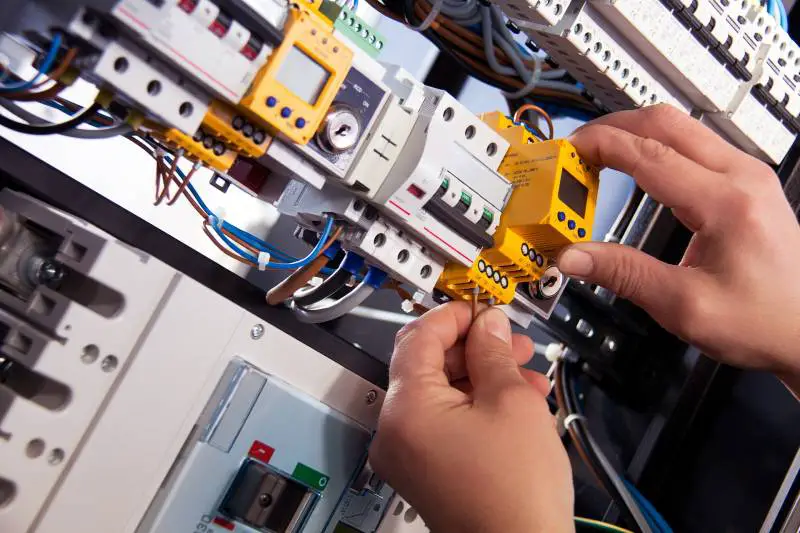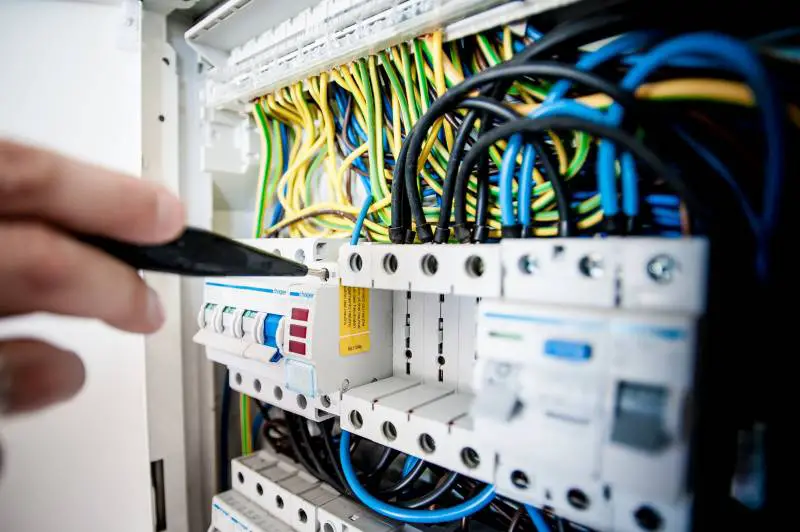Table of Contents
Neutral wires are generally misconstrued to not convey any electric flow in an electric circuit. It is because we don’t get an electric stun when we come in contact with such a wire while standing bare feet on moist ground.

This is not due to the absence of current in the wire. But, the three distinct wires in a simple electric circuit convey electric flow between the source and the power plug.
First, we need to analyze the capacity of each of the three wires. Then only you can understand why a nonpartisan wire delivers an electric stun.
Types Of Wires:
- Hot Wire – also called stage or live, it’s a charged wire that conveys electric flow from the force source to the plug.
- Neutral Wire – nonpartisan wire that conveys the unused flow from an energy outlet back to the force source to finish the electric circuit.
- Ground Wire – it’s a security wire used to give a substitute way to the returning current if there arises a framework glitch.
The neutral wires can be spotted due to their red color, neutral wires with white and ground wires with green color. This color scheme is not absolute and can vary across countries. These color codes are crucial for a safe working environment and to stay compliant with National Electric Code. Also, you need to keep three essential things in mind:
- Electric current flows in a complete circuit only. If you come in contact with an electric circuit, your body will become a part of the electric circuit, and the current will flow through your body. However, you don’t get an electric shock when wearing slippers because slippers cut off the electric circuit. Hence, the current doesn’t reach back to its source.
- Electricity always tries to return to its power source. The electric current changes its route with the help of alternate electric conductors in case of an abnormality.
- Among multiple routes, the electric current will choose the path with the lowest resistance to complete the electric circuit quickly.
Reasons For A Neutral Wire To Be Hot
Open Neutral Wire
Neutral wires become hot because they carry the same voltage as the live wire. The reason is an open neutral wire.
This means that there is a break between the wire that connects the panel with the power source. This break disrupts the flow of current in its original route. Also, the low resistance of the neutral wire will be lost.
If you touch an open neutral, you can expect an electric shock. This is because now your body will be the route with lower resistance than the neutral wire. When fixing the open neutrals, finding the break can be a bit difficult.
Increase Of Resistance In Copper Wires
Most wires in the electric circuit are made up of copper. Copper is a good conductor of electricity with low resistance. But the resistance increases due to the increase in the length of copper wire.
If the wire is long, the resistance increases drastically to affect the performance of the electric system. When you provide lower resistance to a neutral wire through your body, you’ll experience a hot neutral.
Sharing Of A Neutral Connection In A 3-Phase System
Another reason for the neutral to turn hot is the practice of sharing the neutral connection in a 3-phase system. In this system, the three phases are out of phase with each other.
The returning current will balance out rather than returning to the power source through the neutral wire.
This mechanism only works if the current drawn between the three phases is balanced. However, the current is imbalanced in most modern electrical appliances.
These electrics have switch-mode power supplies that draw current in variable bursts. Thus making the neutral wires out of capacity and balance, and you experience a hot neutral wire.
Incorrect Wire
Maybe your neutral wire is wrongly connected in place of a hot wire. It happens due to color code misinterpretation. Generally, the neutral wire is either white or grey, however, in some codes, it’s blue. In fact, a neutral wire can be yellow, grey, or blue.
To identify the neutral wire, you can use a multimeter. Just touch the multimeter to the exposed wires. If reading shows, it’s the hot wire. However, if there is no reading, it’s a neutral wire.
Lack Of Ground Wires
Grounding neutral wires is a common practice to safeguard the entire electric circuit. If you have not grounded the neutral, the electric current increases and heats the wire.
Perhaps, It can accumulate to the point causing overheating and fires due to a high voltage in the neutral wire. Therefore, it’s crucial to ground the neutral wires.

Solution: Use A Circuit Breaker
A circuit breaker is commonly used to prevent the problems mentioned above of neutral wiring producing an electric shock. It is an automatic switch to detect excess current and short circuits to protect the electric circuit.
When an electric current flows through your body, a circuit breaker can detect the change in the route of the electric current. Then, it automatically shut-off the electric passage from the circuit to safeguard you from any current damage.
Similarly, it safeguards other electrical appliances in your house that experience variable bursts of electric currents.
Why Doesn’t A Neutral Wire Give Us Electric Shock?
When you contact a hot wire while remaining on a damp ground surface with exposed feet, you’ll experience an electric stun. The reason is that your body goes about as an electric conduit.
It gives less obstruction than the power plug or apparatus. Also, It ends up being a backup course of action, and the flow streams to the ground through your body to finish the electric circuit.
The current travels from a high voltage source to a low voltage source via a less safe conductor. In a neutral wire, the returning current will endlessly flow through the course will less opposition. Consequently, it doesn’t pass through the human body as it doesn’t offer the least resistance.
The explanation of the neutral wires grounding implies that they are associated with ground wires. It lessens the opposition for an electric stream lower than your body.
Overall, your body offers resistance to the current flowing, while the neutral wire offers zero resistance. Current always prefer traveling through the path with least resistance. Hence, the current exits through the neutral wire.
Subsequently, the current doesn’t course through you regardless if you contact the neutral wire.
Final Takeaway
If you connect a neutral wire instead of a live wire, reverse polarity will be created, which can be dangerous.
Similarly, loose neutrals are also dangerous and can damage electrical appliances and electric circuits of the home.
Electricity is hazardous. You should not experiment with electric circuits if you don’t have the skills and experience. Save yourself from a potential shock and hire a professional to do the job effectively.

![Hot And Neutral Reversed But Wired Correctly [Causes + Solutions] Hot And Neutral Reversed But Wired Correctly [Causes + Solutions]](https://homesteadandprepper.com/wp-content/uploads/2022/06/Hot-And-Neutral-Are-Reversed-But-Wired-Correctly-150x150.jpg)






